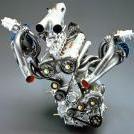ALFA ROMEO in Formula UNO o Le Mans? Possibile! Parola di Sergio Marchionne
-
Contenuti simili
-
- 1083 risposte
- 135205 visite
-
Non va bene Milano? Allora “Alfa Romeo Junior!” - [Fotoritocco & Proposte grafiche dal web e non] 1 2 3 4 58
Pubblicato da xtom,
- piattaforma large
- alfa 951
- (e 6 altri in più)
- 579 risposte
- 34730 visite
-
- 3060 risposte
- 637256 visite
-
-
-





















Messaggi Raccomandati: